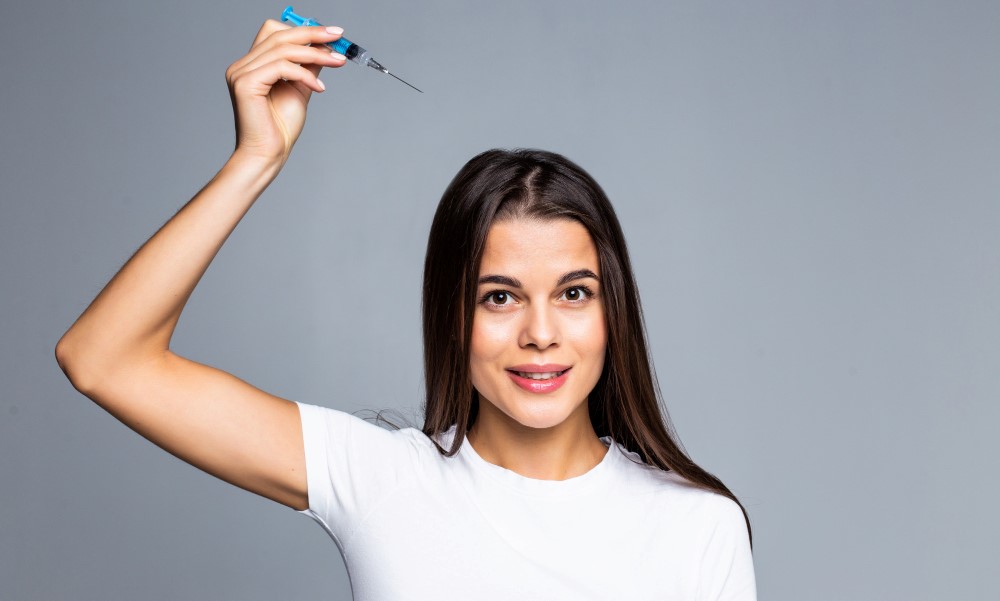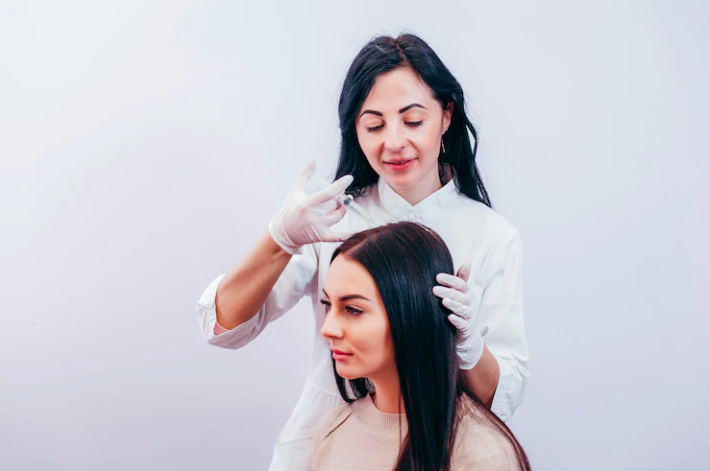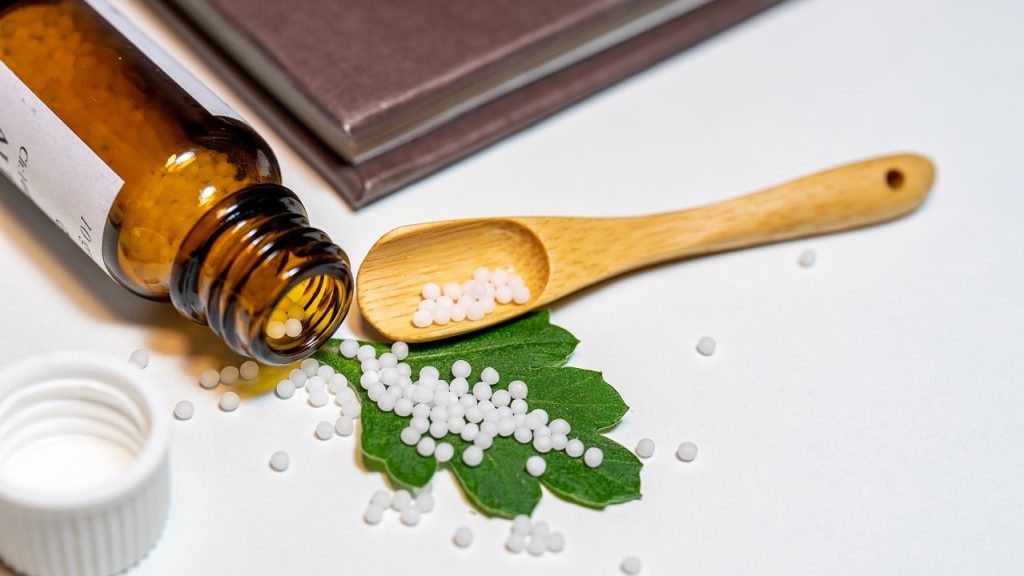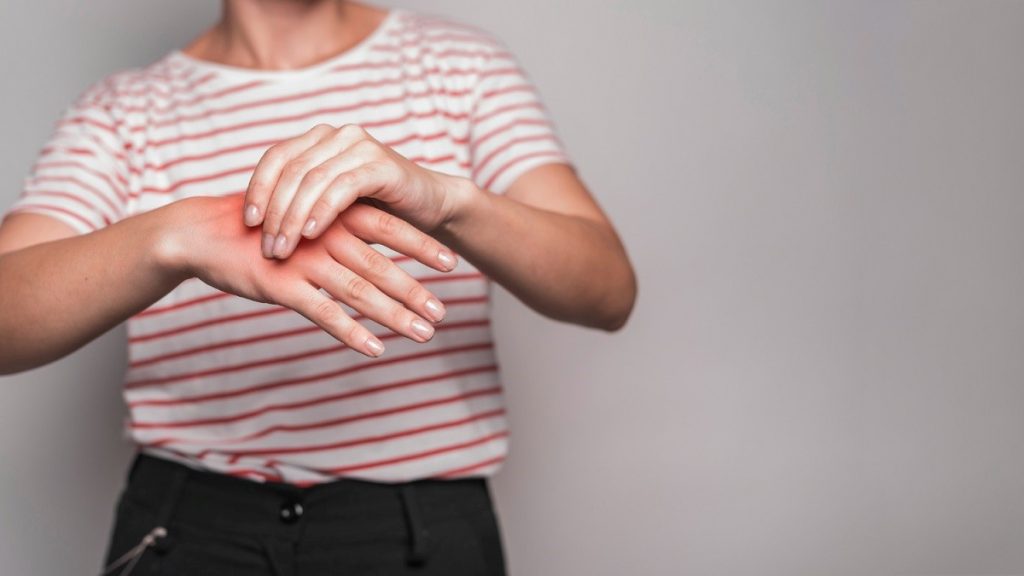Only a few people on the planet are blessed with healthy and shiny hair. Most of you might have faced hair loss problems at some point in your life. Hair loss is the most common problem that affects most of us, whether you’re young or old, male or female. PRP Hair Treatment is the most popular and advanced treatment methodology recommended by doctors to address different types of hair fall problems.
Let’s take a closer look at PRP treatment, how it works, who it’s best for, and what it may do for you.
What is PRP Treatment?
Hair loss treatment using PRP (platelet-rich plasma) is a three-step treatment process that involves blood collection, processing, and injecting a person’s blood into the scalp.
According to dermatologists and hair specialists, PRP injections strengthen and maintain natural hair growth by increasing blood flow to the hair follicle and increasing hair shaft thickness. This procedure is sometimes combined with other hair loss treatments or medications.
PRP Hair Treatment Procedures
The PRP hair treatment consists of four steps, as detailed below:
Blood Sample Collection: Your doctor will take a 20-mL blood sample as the first step in the PRP hair loss treatment process.
Separation of Platelets: The centrifuge technique is used by dermatologists to separate platelets from the blood. The double-spin procedure assures the optimal level of platelets that are high in growth factors.
Extraction and Activation of PRP: From the remaining layers of Platelet Poor Plasma (PPP) and red blood cells in the tube, doctors extract PRP. The trichologist will use an activating agent to activate the growth factors in the plasma before injecting it into a patient’s scalp.
Injections of PRP into the affected area: Finally, using microneedles, the PRP extracted from the blood will be injected safely into the affected area or the area that requires increased hair growth on the scalp. To ensure a pain-free procedure, you may be given local anesthesia into the scalp margin before inserting the platelet-rich plasma.
Benefits of PRP Treatment

PRP hair treatment offers the following advantages as a stand-alone treatment:
- Strengthens the existing hair
- Protects the existing hair from thinning
- The treatment is generally painless and involves no cuts or wounds
- The method is non-allergenic as your own blood material is used
- Visit results following a few sessions
- PRP therapy for hair loss has a relatively short recovery period.
- The PRP hair treatment produces a fully natural effect.
How safe is PRP hair treatment?
PRP is a safer option for many people who are suffering from intense hair loss, hirsutism, and hair thinning because it does not cause allergies, hypersensitivity, or foreign-body reactions. For many years, PRP has been used successfully in numerous medical and surgical specialities. However, using PRP is a personal choice that should be made after thorough research and consultation with a dermatologist. Since PRP treatment is a medical procedure done using the derivatives of your own blood, there is no chance of catching an infection from someone else.
PRP is made from your cells that haven’t been altered or modified; hence, your immune system won’t reject it. When administered by a trained medical professional, PRP injections are considered safe. Pain, redness, headaches, and temporary hair shedding are the mild risks involved. Those with a history of bleeding problems or autoimmune diseases should stay away from PRP treatment.
Side effects of PRP hair treatment
In the PRP hair treatment, the fluid injected into the scalp is taken from the patient’s blood. Hence, the chances of health risks and side effects are comparatively lesser. However, some people may experience the following side effects:
- Infection in the injected area
- Mild pain at the injection spot
- Rare cases of nerve injury
- Scar tissue
- Swelling & Itching
- Scalp tenderness
- Temporary bleeding
- Mild side effects from the anaesthesia administered during the procedure
Success rate
PRP therapy has been proven to be one of the most successful non-surgical treatments for hair loss, pattern baldness, and thinning of hair. PRP hair treatment under the supervision of a trained dermatologist will bring you lasting results. It will strengthen the hair follicles, minimise hair loss, and reverse hair thinning, all of which will help to improve scalp coverage by increasing natural hair regeneration. You will notice a decrease in hair fall after a few sessions. Experts say that you will see visible hair regrowth after the third session.
Based on the severity of hair loss and thinning of hair, your dermatologist will calculate the number of PRP treatments and touch-up sessions you require, in addition to the treatment in the form of topical applications and oral medications.
According to a 2015 study of males with patterned hair loss in Italy, PRP treatment helped increase hair density in specific areas of the scalp, showing notable improvements after three months. PRP hair therapy, together with adjuvant therapy, is considered a viable therapeutic option for patterned hair loss not only in males but also in females, because of its safety and cost-effectiveness.
Who can undergo PRP hair treatment?
While PRP treatment has the potential to improve the quality and quantity of hair for those who are suffering from hair loss. Many hair loss remedies are targeted for men, although hair loss affects many women. PRP treatment is recommended for both males and females suffering from certain conditions such as alopecia areata and traction alopecia, as well as those who want to strengthen their existing hair, boost natural hair growth, and prevent hair fall.
Candidates for this therapy include those with hair thinning and androgenetic alopecia, often known as male or female pattern baldness.
This technique is most effective for people who have recently started experiencing rapid hair loss. However, the longer the problem goes untreated, the more difficult it is to resolve.
Cost of PRP treatment
PRP therapy usually consists of three sessions over the course of four to six weeks, with maintenance treatments every four to six months.
The initial three treatments typically cost $1,500–$3,500, with one injection costing $400 or more. Various factors that influence PRP pricing, include:
- Your geographic location
- Quality of equipment
- The inclusion of nutritious elements
Many insurance plans consider PRP treatment for hair loss to be cosmetic, so none of the costs related to this treatment is covered. To see if PRP therapy is covered by your insurance, contact your insurer or insurance agent.
Take Away
The majority of people, including celebrities and well-known figures from many walks of life, have benefited from platelet-rich plasma treatment for hair loss. It is a relatively new but effective and responsive treatment that is appropriate for people of all ages. A large number of people trust it to retrieve their lost hair by employing this therapy process. You need to consult the best hair and skin clinic to get a proper consultation and advanced treatment.
If you are suffering from hair loss problems, consult your dermatologist or the nearest hair and skin clinic and get the best hair fall treatment at an early stage.
FAQs
- Is PRP hair treatment painful?
PRP hair treatment is relatively non-invasive and pain-free as it does not involve any surgical procedures.
2. Is PRP hair treatment a permanent solution?
It may take a few visits to see the same outcomes. Once the results start to appear, you should not stop the treatment; touch-ups are required at least once a year to preserve fresh hair regrowth.
3. Who is an ideal candidate for PRP hair treatment?
Individuals seeking a non-invasive, non-surgical hair regrowth method might consider PRP hair treatment. Patients with early-stage hair loss are the perfect candidates since the treatment may not be effective after the hair follicles have been damaged or dormant for a long time.
4. How many PRP treatment sessions are required for the desired hair regrowth?
The number of PRP sessions required can vary with each person. It depends on several factors, such as hair loss severity and overall health. The majority of patients undergo three separate sessions, with a 5–6 week gap. Your doctor will recommend the required number of sessions considering your hair loss pattern.



